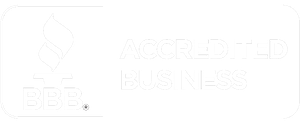As most mass tort lawyers know, there is a significant advantage to having clients’ settlement monies and their fees in a qualified settlement fund (QSF). For strategic settlement planning, most lawyers who refer their mass tort cases, or those who have solely a single-event tort practice, would benefit from knowing the inner-workings of QSFs and their fundamental value not only to clients, but especially for year-end tax planning.
Whether you are settling an individual case, are expecting fees on a mass tort, or just generally want to understand how QSFs work day in and day out, we would be happy to have a conversation over the phone. Sophisticated firms these days set up a “firm” QSF with broad powers in both the court filings and escrow agreement with our firm for a large universe of case types. This allows you, as the managing partner or equity member of a firm, to build up fees during the year and get significant timing and decision-making control over your firm’s finances at year-end.
An important note: settling cases or an inventory of cases into a QSF is not a decision on what is to be done with the money, but a decision only to resolve the litigation and collect.
Here are a few examples in which QSFs are invaluable:
- A case for $3 million settles mid-November. You are unsure if your firm would like those fees this calendar year, but you want to ensure that your clients gets their funds ASAP. A QSF resolves any potential conflict between lawyer and client that may exist about when to receive the funds from settlement. Some clients prefer more time to plan than their attorneys do, and vice versa.
- A wrongful death is settled, and the probate process may take a few months. By settling the case into a QSF (assuming your state bar rules allow), your firm can take fees and expenses immediately. All client distribution possibilities are preserved.
- A client needs to establish a special needs trust and is considering moving to Florida (or any state for that matter). The coordination of benefits, potential court approval or the state Medicaid agency approval, and the legwork associated with the SNT can take a significant amount of time. Money in a QSF is earning upward of 2.3%, which can be used to offset lien costs, additional legal drafting fees, etc. Time value of money.
Once your fees are in a QSF, you also reserve the right until year-end to do a traditional attorney fee deferral, deferring the taxes due on those fees until you begin to take receipt years later. Of course, just because you put fees into a QSF doesn’t mean you will make a deferral; it just sets the stage to do so when you have a better picture of the year you have had, and you have had enough time to strategically think about the concept.
Few attorneys know exactly what they want to do with their fee when they settle a case, so the QSF solves the timing issue of a desire to consider tax deferral and an obligation to settle the case for the client. Buying time to plan is key. To discuss the benefits and possibilities of a QSF, feel free to give us a call.


